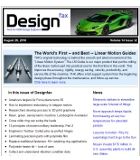 |
| February 04, 2025 | Volume 21 Issue 05 |
Designfax weekly eMagazine
Archives
Partners
Manufacturing Center
Product Spotlight
Modern Applications News
Metalworking Ideas For
Today's Job Shops
Tooling and Production
Strategies for large
metalworking plants
Renault EV concept is super lab on wheels: Filante Record 2025
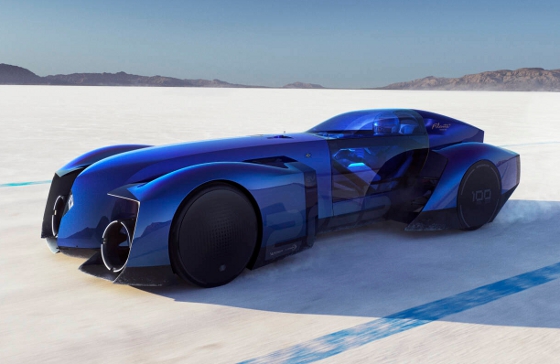
Renault Filante Record 2025. [All images courtesy of Renault]
Inspired by the legendary 40 CV des Records (1925-1926), Nervasport des Records (1934), and Etoile Filante (1956), the all-electric Renault Filante Record 2025 is no ordinary concept car. It's part Batmobile and part salt-flats racer designed for reaching ultra efficiency. The single-seater demo car was created to be bold and innovative, previewing a range of technologies that will be studied for use on tomorrow's production vehicles.
Renault has provided a very limited first look at this new lab on wheels. Here is what we know so far.
The car's makers aim to establish a new record for efficiency in 2025 using the same battery capacity (87 kWh) as the brand's Scenic E-Tech compact crossover SUV. Supplied by Ampere, cell-to-pack technology for the battery maximizes the energy efficiency of the vehicle while delivering space and weight savings. A carbon fiber battery casing also contributes to weight savings, while providing increased strength and protection.
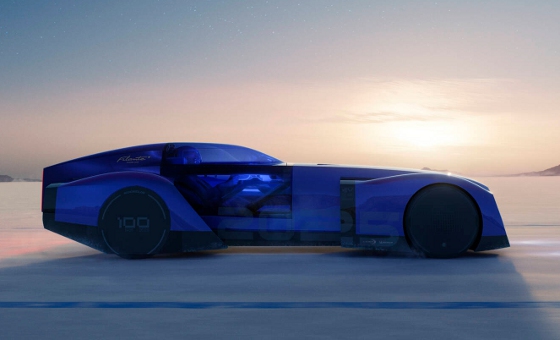
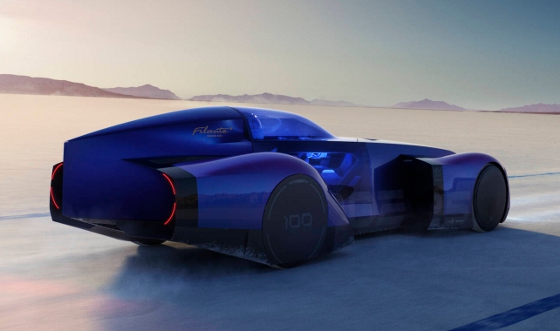
To date, details on the electric motor(s) configuration for the car have not been released.
The demo car features an exceptional, ultra-aerodynamic design optimized for performance. The aerodynamics engineers sought to optimize the airflow around the car, with particular emphasis on the transition between the different parts of the vehicle. The elongated shape of the single-seater played a key role here, since longer vehicles allow better control of the aerodynamic flow, thereby reducing interference.
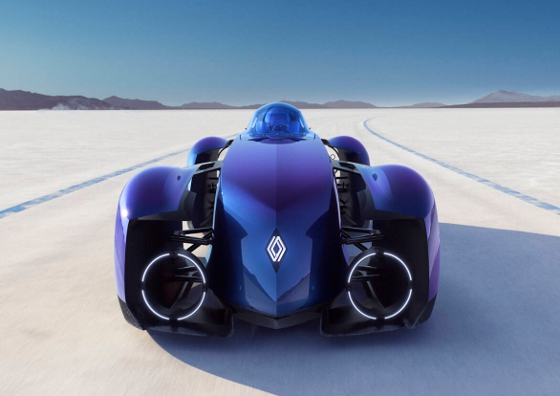
The wheels are normally major sources of aerodynamic interference, but they have been carefully faired in, in order to minimize their impact on performance. The engineers initially used simplified shapes, before perfecting the design for the best tradeoff between styling intent and aerodynamic performance. In the same spirit, the suspension arms were also faired in.
The concept car is 16.8 ft long (5.12 m), 3.9 ft tall (1.19 m), and only 3.8 ft wide (1.71 m). The vehicle weighs 2,205 lb (1,000 kg) and features bodywork in Ultraviolet Blue, a new shade that looks blue or violet depending on the reflections of the light and the viewing angle. Reminiscent of the 40 CV des Records, this color was recreated specially for Filante Record 2025.
One of the key goals in the development of Renault Filante Record 2025 was to make the vehicle lighter in order to maximize energy efficiency and therefore range. The project deployed an innovative combination of ultralight materials and advanced manufacturing techniques. By maximizing the use of carbon fiber, a material of key importance for reducing the weight of the chassis and body components without compromising their structural strength, the engineers were able to keep the weight of the car down while optimizing stiffness and safety.
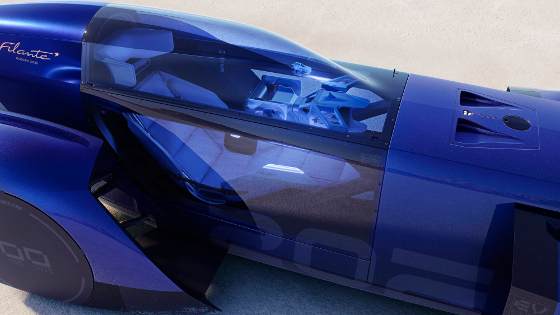
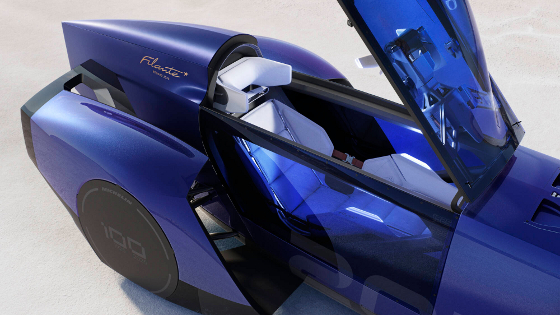
The chassis was optimized through detailed calculations and studies on possible combinations of materials. Aluminum, carbon fiber, and steel alloys were optimally combined in order to reduce component cross-sections to the minimum necessary to withstand mechanical stress while maintaining maximum strength.
To further reduce vehicle weight, the engineering team used Scalmalloy, a high-strength aluminum alloy specially designed for 3D printing. Engineers were able to manufacture complex parts with extreme precision, while reducing the overall weight of the vehicle. The 3D-printing process also minimized material waste.
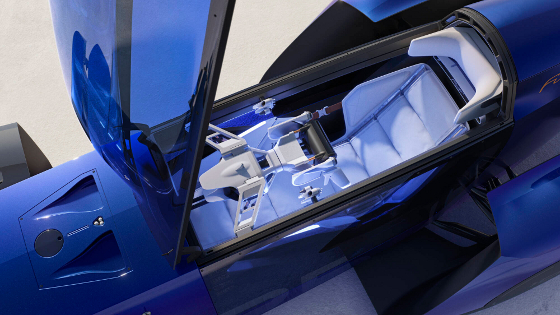
The Renault Filante Record 2025 also replaces the conventional mechanical systems with electronic steer-by-wire and brake-by-wire technologies, delivering a fuller driving experience while reducing the number of mechanical components. This freed up space to rethink vehicle architecture and optimize weight.
Steer-by-wire is a major step forward in steering control. Unlike conventional systems that use a mechanical steering column to connect the steering wheel to the wheels, steer-by-wire technology relies on an electronic link between the steering wheel and steering rack motors.
This technology also provides greater flexibility in that the steering components -- including the steering wheel -- can be positioned wherever required. This makes it possible to overcome a whole range of architectural and standardization constraints in order to optimize the cockpit layout.
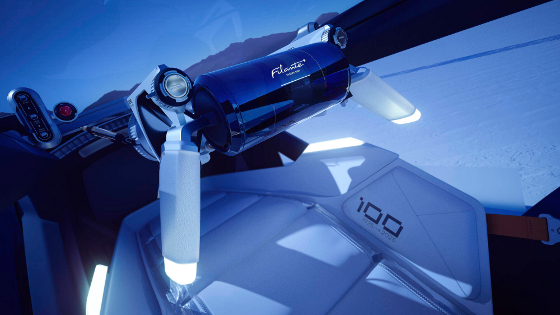
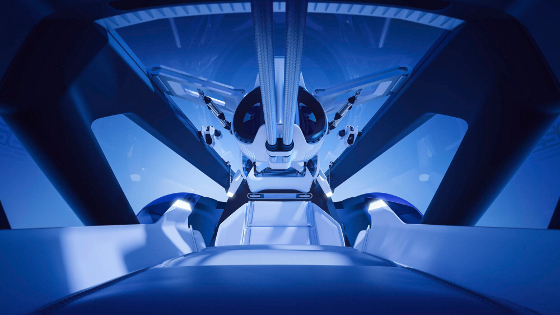
Brake-by-wire technology operates on a similar principle. Renault Filante Record 2025 does not have a conventional pedal assembly. Instead, braking effort is managed by an electronic control system. When the driver activates the brakes, an electrical signal is sent to the braking system, which distributes the force applied to the wheels for optimum effect.
The Renault Filante Record 2025 is fitted with 20-in. Michelin tires specially designed to deliver pure performance, while also maximizing range. The tires have a high and narrow shape. The project engineers say the tires influence range by around 20%, and therefore play a key role in this type of project. Renault engineers say these tires push back the limits of rolling resistance; their coefficient is almost 40% lower, at around 4 kg/ton in conditions of vehicle use, compared with around 6.5 kg/ton for a conventional vehicle tire.
Inside, the cockpit design is inspired by the worlds of aviation and space travel. In this pared-down environment, each component or system (safety and opening functions, cruise control, accelerator, braking, etc.) is within easy reach of the driver, with a design geared toward ergonomics and weight reduction.

The seat is supported by thin carbon blades clad in a technical textile, a choice again inspired by the aeronautics and aerospace industries, where every gram is important in maximizing performance. The integration of the controls and instruments reflects a flowing, minimalist approach. Each function is displayed on an ultra-thin digital screen.
Will the Renault Filante Record 2025 set any efficiency records of its own? We will have to wait and see. For now it is being paraded at high-end auto shows in Europe before Renault engineers really put it through its paces.
Source: Renault
Published February 2025
Rate this article
View our terms of use and privacy policy
